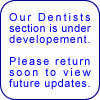Ability
of Therapeutic Levels of Ozone to Oxidatively Consume
Biomolecules
By C Smith, M Grootveld,
C Silwood, L Abu-Naba'a, H Al Shorman and E Lynch Queen's
University of Belfast, United Kingdom |
| Objectives:
The powerful microbiocidal activity of ozone (O3)is well
known and previous investigations have demonstrated the
potential employment of this reactive oxygen specis (ROS)as
a therapeutic agent in the treatment of dental caries.
This ROS is extremely reactive towards selected carious
dentine biomolecules, and such reactions are likely to
be of relevance to its microbiocidal activity. Therefore,
in this study we have employed high resolution proton
(1H) nuclear magnetic resonance (NMR) spectroscopy to
determine the nature and extent of the oxidation of biomolecules
present in carious dentine, plaque and saliva. |
Methods: Aqueous solutions containing sodium
pyruvate, a-D-glucose, L-cysteine and L-methionine (4.00 mM)
were prepared in 40.0 mM phosphate buffer (pH 7.00) which
was rigorously deoxygenated with argon gas prior to use. 5.00
ml aliquots of these solutions were treated with O3 [1] for
a period of 20 s (equivalent to a delivery of 8.96 mmol. of
this oxidant). These experiments were conducted in triplicate.
Matching de-oxygenated solutions of these biomolecules untreated
with O3 served as controls.
Results: Attack of O3 on a-D-glucose gave
rise to formate as a major product, i.e. 1.69 ± 0.1
mM (mean ± s.e.) generated, and treatment of pyruvate
with this oxidant produced acetate and CO2 via an oxidative
decarboxylation process (98 ± 2% yield under our experimental
conditions). Moreover, the amino acid volatile sulphur compound
(VSC) precursors cysteine and methionine were converted to
their corresponding primary oxidation products cystine (100%
yield) and methionine sulphoxide (99 ± 1% yield) respectively.
Conclusions: Multicomponent analysis of appropriate
chemical model systems provides valuable molecular information
regarding the reactivity of O3 towards oral environment biomolecules.
For example, oxidation of cysteine and methionine provides
evidence for the ability of O3 to combat oral malodour since
these biomolecules are precursors to volatile sulphur compounds
(VSCs). [1] HealOzone Unit, CurOzone, U.S.A. and KaVo
Topic: Cariology Research
Keywords: Cariology, Chemistry, Therapeutics
 |
|




